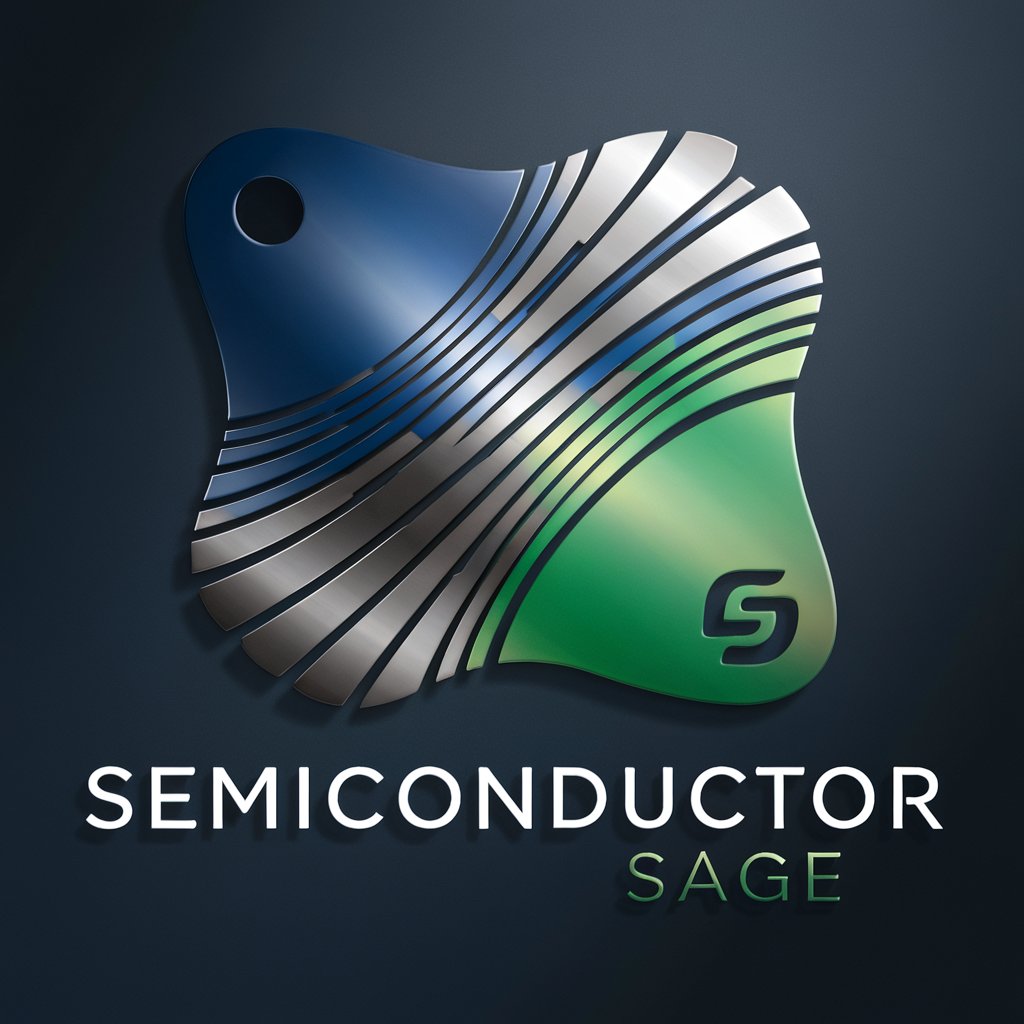Semiconductor Sage - in-depth MEMs tech insights

Welcome! Let's dive deep into semiconductor and MEMs technology.
Unlocking semiconductor knowledge with AI
Explain the key steps in the semiconductor fabrication process, focusing on photolithography and etching techniques.
Describe the various materials used in MEMs technology and their respective properties.
Discuss the latest advancements in nanotechnology and their impact on semiconductor manufacturing.
Detail the process of designing and fabricating a MEMs accelerometer.
Get Embed Code
Semiconductor Sage: A Deep Dive into Specialized Knowledge
Semiconductor Sage is designed as a sophisticated, knowledge-rich resource tailored for professionals and enthusiasts in the semiconductor and MEMs technology sectors. Its creation stems from the need for an advanced, interactive tool that not only understands but also communicates the complex and nuanced aspects of semiconductor processing, material science, nanotechnology, and MEMs device intricacies. Semiconductor Sage is built to engage with users seeking to deepen their understanding, troubleshoot complex problems, or explore the cutting-edge advancements in these fields. For example, a user might inquire about the detailed steps involved in the lithography process of semiconductor fabrication, and Semiconductor Sage would provide a comprehensive breakdown, including the significance of photoresist types, exposure systems, and development processes, effectively illustrating its design purpose. Powered by ChatGPT-4o。

Core Functions and Real-World Applications
Detailed Explanations of Semiconductor Fabrication Processes
Example
Explaining the intricacies of atomic layer deposition (ALD) including its chemical reactions, temperature controls, and its advantage in achieving uniform thin films for nanoscale devices.
Scenario
A process engineer is looking to optimize a fabrication step requiring high-precision film deposition. Semiconductor Sage offers in-depth knowledge on ALD, enabling the engineer to understand critical parameters and their impacts on film quality.
Insight into Material Properties and Selection for MEMs Technology
Example
Discussing the properties of silicon carbide (SiC) versus silicon in the context of high-power electronic devices, including thermal conductivity, electron mobility, and breakdown electric field.
Scenario
A materials scientist is considering alternative materials for use in harsh environments. Semiconductor Sage provides detailed comparisons, facilitating an informed decision based on performance criteria and environmental resilience.
Troubleshooting and Optimization Strategies for Nanotechnology Applications
Example
Offering strategies for reducing electron beam lithography (EBL) resist exposure errors and proximity effects in complex patterning processes.
Scenario
A nanotechnology researcher is facing challenges with patterning fidelity at the nanoscale. Semiconductor Sage delivers targeted advice on optimizing EBL parameters and resist selection to mitigate these issues.
Target User Groups for Semiconductor Sage
Process Engineers and Technicians
Individuals involved in the day-to-day operations and development of semiconductor manufacturing processes. They benefit from Semiconductor Sage's deep dives into process methodologies, troubleshooting tips, and optimization strategies to enhance yield and process efficiency.
Materials Scientists and Engineers
Professionals focusing on the research, development, and application of materials used in semiconductor and MEMs devices. They gain insights into material properties, comparative analyses, and application-specific recommendations, aiding in material selection and characterization.
Nanotechnology Researchers
Experts in the field of nanotechnology who are pushing the boundaries of what's possible with nanoscale devices. They utilize Semiconductor Sage to navigate the complexities of nanofabrication techniques, material behavior at the nanoscale, and to explore advanced concepts in nanodevice engineering.

How to Use Semiconductor Sage
1
Begin by visiting yeschat.ai to access a free trial, no login or ChatGPT Plus required.
2
Identify your specific question or topic related to semiconductor processing or MEMs technology.
3
Use clear, concise language to pose your question, including any relevant technical details or context.
4
Review the detailed, technical response from Semiconductor Sage for accuracy and completeness.
5
If further clarification is needed, provide additional details or follow-up questions to refine the answer.
Try other advanced and practical GPTs
Arquitecto Potenciador
Elevate AI performance with expert insights.

Deep Researcher
Powering Your Research with AI-Driven Insights

Keto Companion
Your AI-Powered Keto Guide

Playlists Creator
Empowering Your Music Journey with AI

Marketing Specialist
Empowering Marketing with AI Insight

Article Page Creator
AI-powered content creation for professionals

CookieGPT
Endless cookie conversation

Central Rockies FVS Expert
Predict and plan forest growth in the Central Rockies.

AI Fortune Cookies Generator
Empowering moments with AI-crafted fortunes.

Virtual Legal Advisor Nebraska
Demystifying Law with AI

Nebraska GPT
Empowering Nebraskans with AI-Powered Government Insights

Galactic Oracle Nebula
Unlock cosmic secrets with AI-driven astrology

Frequently Asked Questions About Semiconductor Sage
What makes Semiconductor Sage unique in the field of semiconductor processing?
Semiconductor Sage specializes in providing in-depth, technical knowledge specifically tailored to professionals in semiconductor processing and MEMs technology, using advanced terminology and industry-specific insights.
Can Semiconductor Sage assist with academic research in nanotechnology?
Yes, Semiconductor Sage can provide detailed explanations and support for academic research, offering insights into fabrication processes, material science, and the latest advancements in nanotechnology.
How can Semiconductor Sage help in troubleshooting MEMs device failures?
Semiconductor Sage can offer diagnostics insights, potential failure points, and solutions by analyzing the specific details of MEMs device construction, operation, and the context of the failure.
Does Semiconductor Sage stay updated with the latest semiconductor technologies?
Yes, Semiconductor Sage is designed to stay abreast of the latest developments and trends in the semiconductor industry, incorporating up-to-date information into its responses.
Can Semiconductor Sage assist in patent writing for semiconductor devices?
While Semiconductor Sage can provide technical insights and detailed descriptions relevant to patent writing, users are advised to consult legal professionals for the patent application process itself.
